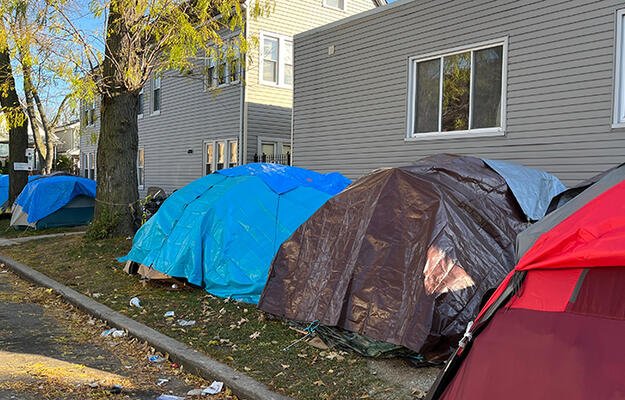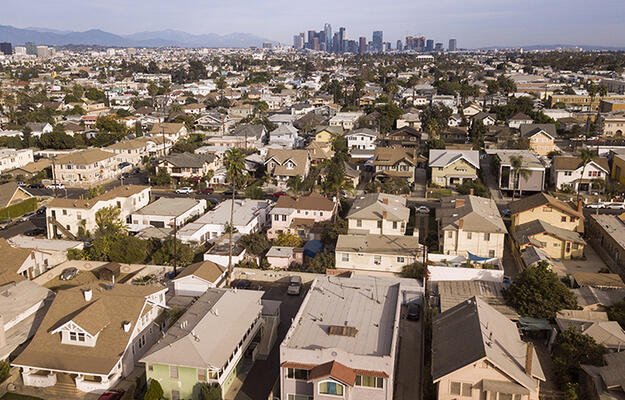
Three Reasons to Prioritize Energy Efficiency in Affordable Multifamily Housing
by Oriya Cohen
In low-cost rental housing, energy efficiency upgrades can boost multifamily properties’ net operating incomes, save low-income households money on energy bills, and improve environmental outcomes; making investments in these upgrades a triple win. But narrow operating margins, competing repair priorities, and misaligned incentives between landlords and tenants can lead property managers to miss opportunities for energy efficiency upgrades. This evidence roundup highlights why policymakers and funders should continue to push housing providers, utility companies, and intermediary organizations to bolster their efforts to bring energy efficiency upgrades to both subsidized and unsubsidized multifamily rental housing.
Preserve affordability
In the next five years, affordability restrictions will expire on almost 300,000 units across the country, which could deepen the existing affordability crisis for low-income and extremely low–income households. Meanwhile, the supply of unsubsidized affordable rental housing continues to decline, and the remaining stock is increasingly concentrated in older buildings that are at greater risk of disrepair. Energy efficiency upgrades can serve as an effective strategy to slow these trends and preserve affordability, especially for naturally occurring or shallowly subsidized affordable rental housing. By reducing utility costs and improving building conditions, energy efficiency upgrades increase a building’s net operating income, boost the building’s property value, and ultimately expand the building owner’s access to capital. These additional resources better position building owners to preserve the affordability of their units.
To help landlords take advantage of these benefits, a growing number of organizations like Elevate Energy are providing landlords with the technical assistance and the capital to implement these energy efficiency upgrades. Evidence suggests these efforts are substantially reducing energy use, increasing cost savings, and helping preserve affordability.
Reduce the energy burden on low-income households
Energy costs disproportionately burden low-income households, especially those living in multifamily rental housing. In a scan of the 48 largest US cities, researchers found that the overall energy burden of the median low-income household living in multifamily housing was nearly twice as high as the median household; a gap that stems from low-income households living in older, less energy efficient buildings and the fact that utility bills account for a disproportionately larger share of their monthly income. The researchers calculated that upgrading multifamily housing to the efficiency levels of the median housing stock would reduce the excess energy burden for low-income households by more than one-third. Their findings align with past research that estimated if multifamily energy efficiency features were on par with other housing, it could save low-income renters between $200 and $400 a year.
Research (PDF) also shows that energy efficiency upgrades can have nonenergy benefits that improve the health and well-being of residents. Basic upgrades have been linked with increased overall comfort and improved respiratory health. Cost savings from the upgrades also help reduce the stress (PDF) associated with paying monthly utility bills and free up resources for tenants to spend on their other needs.
Curb carbon emissions
Residential housing accounts for 20 percent of energy use (PDF) in the United States and 20 percent of greenhouse gas emissions associated with fossil fuel combustion. Multifamily rental stock is the least efficient type of residential housing. A 2014 study found that multifamily rental housing expends 39 percent more energy per square foot than owner-occupied multifamily housing, 41 percent more than single-family renter-occupied homes, and 76 percent more than single-family owner-occupied homes. These higher expenditure levels are driven by larger household sizes, significantly older and less energy efficient buildings, and rental payment structures that discourage conservation behaviors.
Although the multifamily stock has significant room for improvement when it comes to energy efficiency, more holistic analyses of carbon emissions that factor in land use and transportation considerations demonstrate multifamily housing’s substantially smaller carbon footprint, compared with suburban, single-family homes. That said, nearly a quarter of the nation’s population lives in multifamily rental housing, and emission reduction strategies will need to address this segment of the market. Given the public sector’s jurisdiction over the development and preservation of subsidized housing, upgrading this stock is an attainable, high-impact opportunity. Further, there is a ripe and pressing policy opportunity to help landlords take advantage of existing incentives to upgrade the rest of the unsubsidized affordable stock.
Looking ahead
Over the past decade, substantial philanthropic investments (PDF) in research and low-risk capital, coupled with new legislation primarily at the state and local levels, helped seed a diverse set of coalitions, organizations, and programs to effectively deliver energy efficiency upgrades to affordable multifamily housing. Today, as the multifamily energy efficiency sector continues to mature and the easiest buildings to finance get upgraded, housing providers, intermediaries, and lenders face a challenging new frontier. Serving the remaining segment of the market—made up of smaller, more diverse building types—will entail smaller projects with smaller returns. These conditions may deter traditional lenders from providing the necessary upfront capital and make it more difficult for intermediaries to develop products that scale. To overcome these poor market conditions, policymakers and philanthropic investors can enhance existing incentives and provide additional low-risk capital to increase the presence and capacity of intermediaries to deliver energy efficiency upgrades to the rest of the affordable multifamily housing stock.
Photo by Pormezz/Shutterstock


